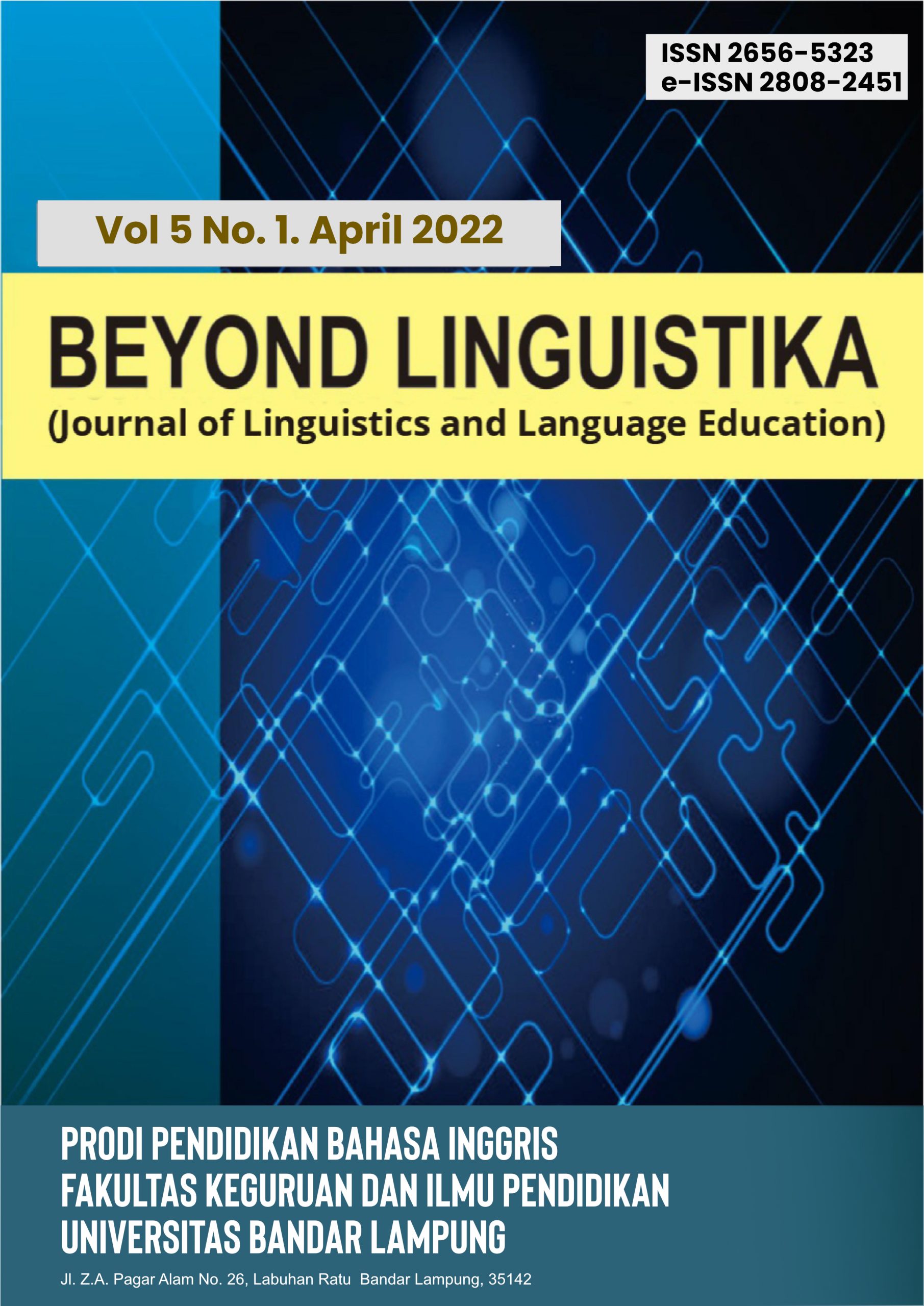The Analysis of Code Mixing of English Department Students of Universitas Bandar Lampung
Abstract
Keywords
Full Text:
PDFReferences
REFERENCES
Ahire, M.M. (2015). “Form and
function of code mixing in Marathi.
Language in India”, 15(7), 189-196.
Casielles-Suarez, Eugenia. (2013).
"Radical Code-Switching in The Brief
Wondrous Life of Oscar Wao."
Bulletin of Hispanic Studies 90 (4):
-87.
https://doi.org/10.3828/bhs.2013.30
Claros, M.S.C., & Isharyanti, N.
(2009). “Code Switching and Code
Mixing in Internet Chatting: Between
‘yes’, ‘ya’ and ‘si’ a case study.
Hoffman, Charlotte. (1991). “An
Introduction to Bilingualism Chapter
”. London: Longman.
Holmes, Janet. (2001). “An
Introduction to Sociolinguistics Third
Edition. New York: Longman.
Muysken, P. (2000). “Bilingual
Speech A Typology of Code – Mixing.
Cambridge, United Kingdom:
Cambridge University Press.
Palys, T. (2008). “Purposive
Sampling” In L.M. Given (Ed.) The
Sage Encyclopedia of Qualitative
Research Methods. (Vol.2). Sage: Los
Angeles, pp. 697-8.
Wardaugh, Ronald. (2006). “An
Introduction to Sociolinguistics”, New
York: Blackwell Publishing Ltd.
DOI: http://dx.doi.org/10.36448/bl.v3i2.1821
Refbacks
- There are currently no refbacks.




